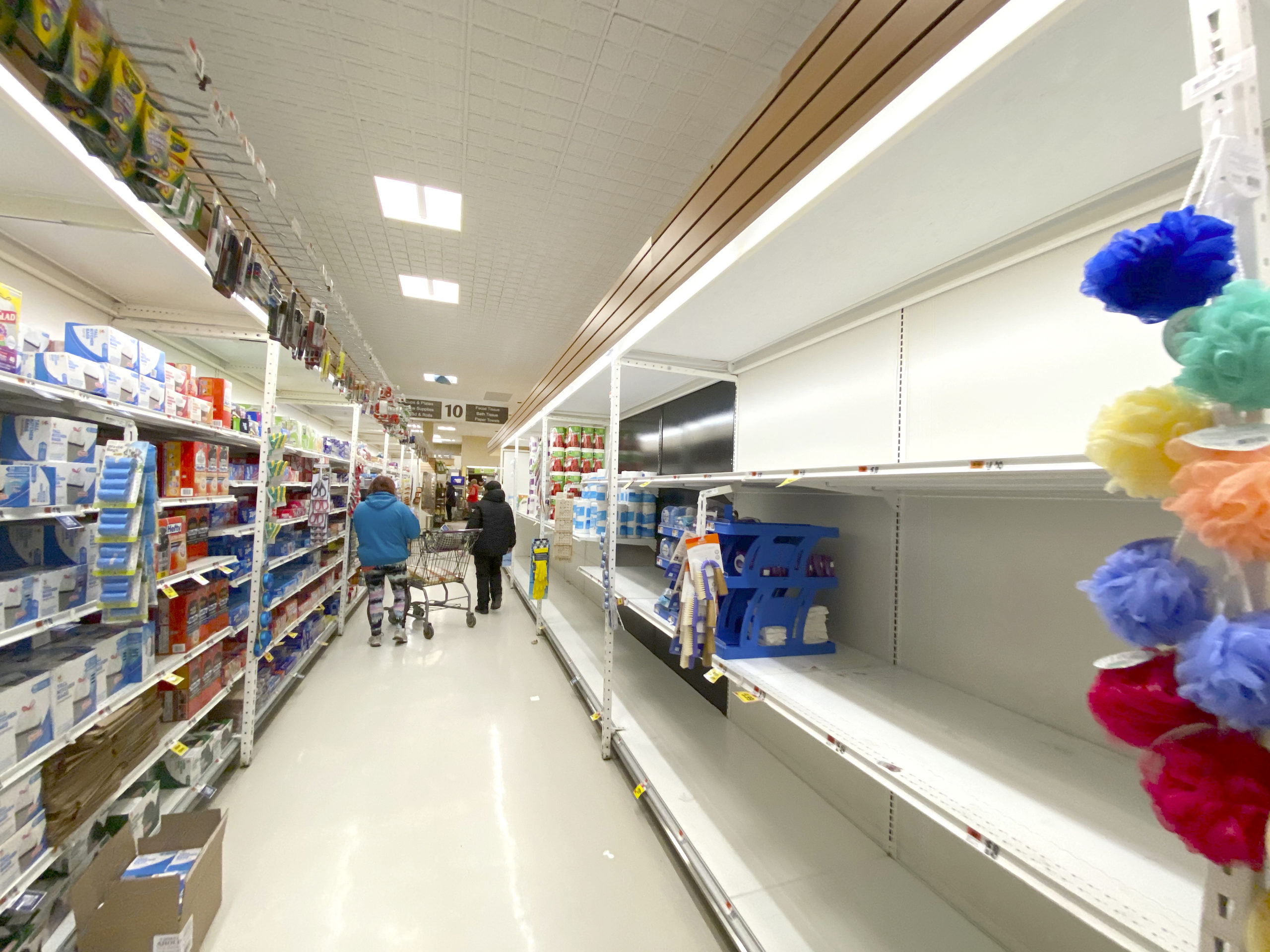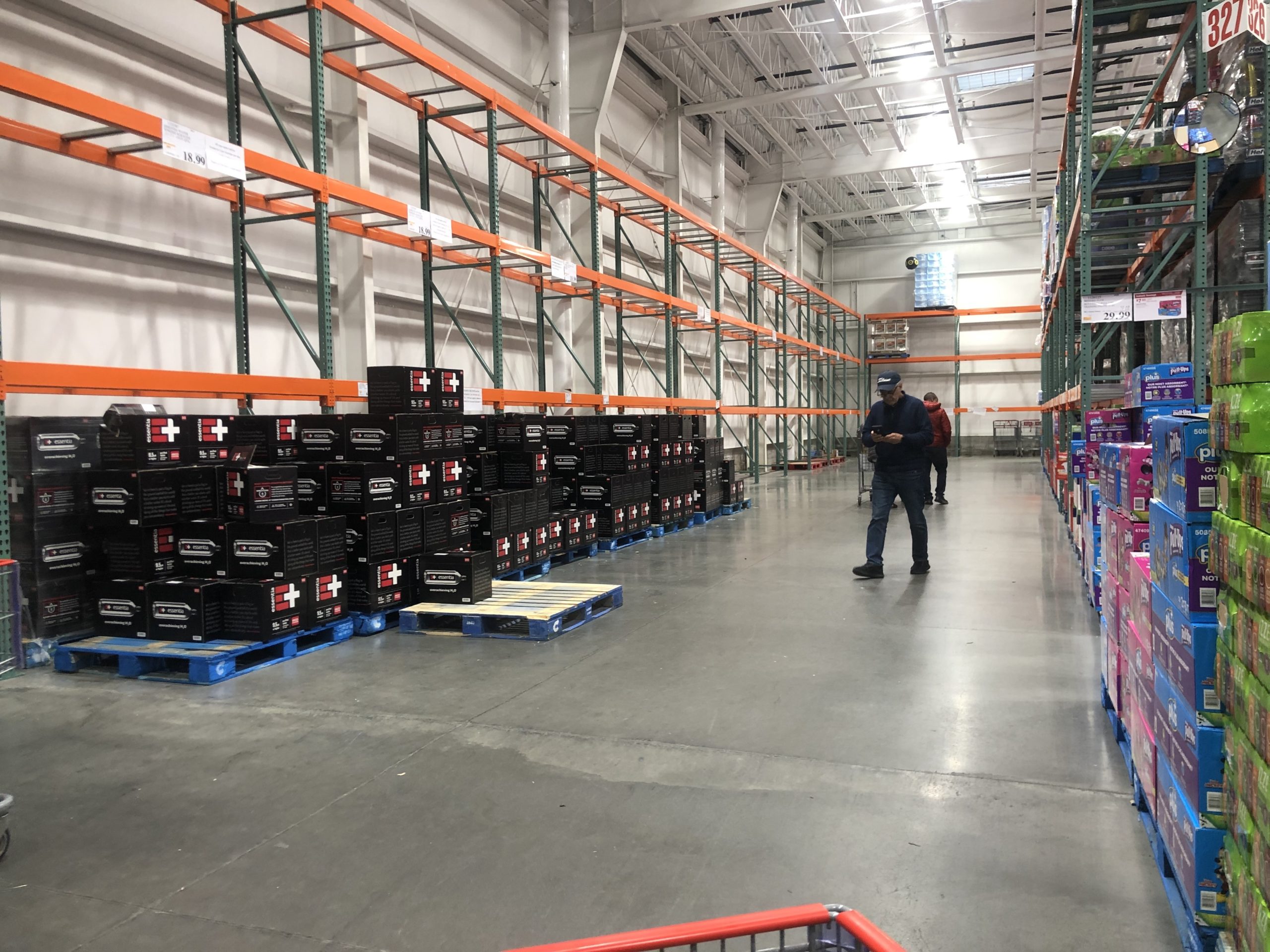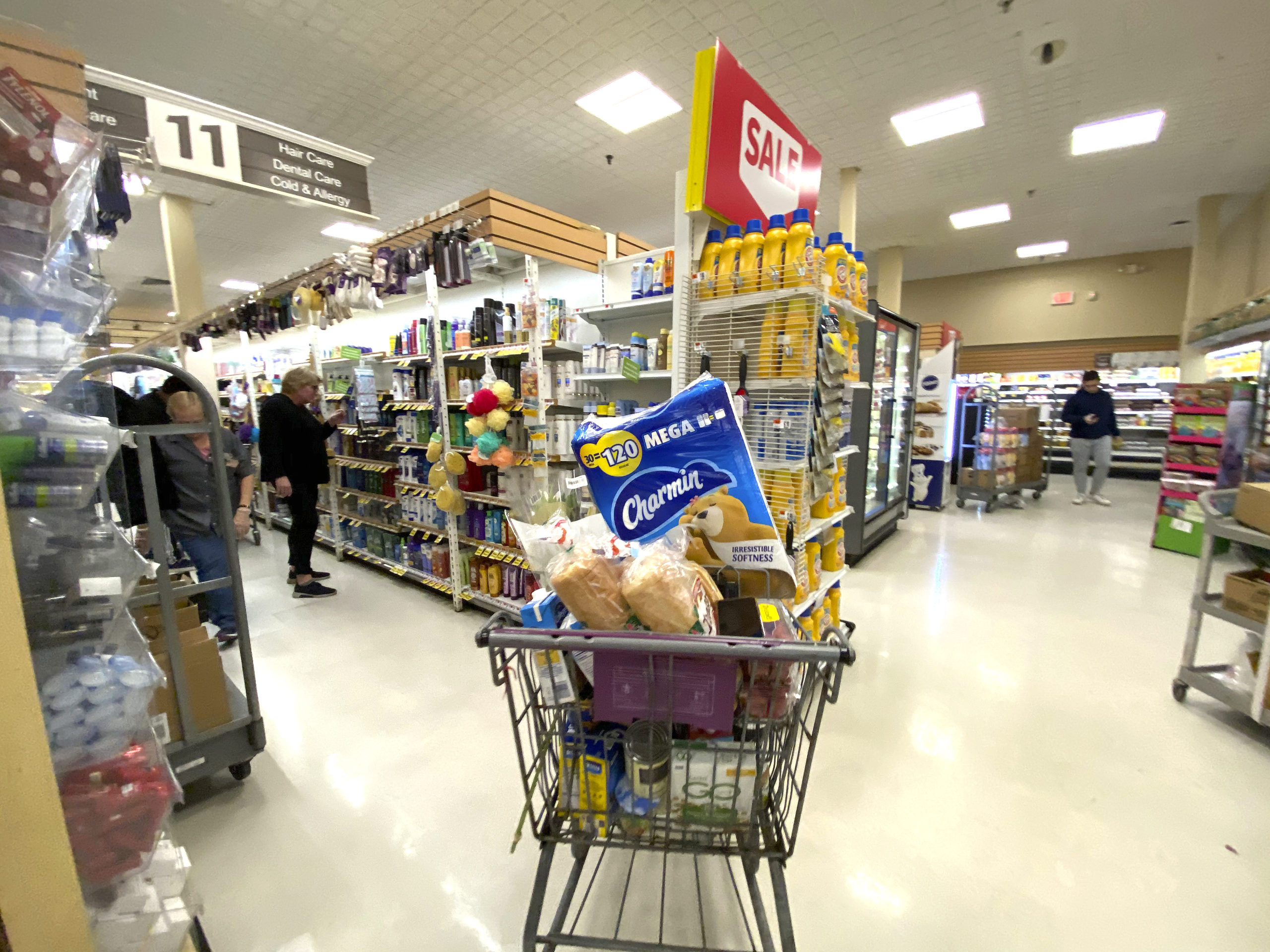
Even the normally mountainous supplies of bath tissue at Costco have been depleted by the panic-driven stockpiling.
A lucky shopper at the Stop and Shop in Southampton got what may have been the last of the Charmin in the store on Thursday. DANA SHAW
The shelves that were once stuffed with toilet paper were bare at the Stop and Shop in Southampton on Thursday. DANA SHAW

Even the normally mountainous supplies of bath tissue at Costco have been depleted by the panic-driven stockpiling.

A lucky shopper at the Stop and Shop in Southampton got what may have been the last of the Charmin in the store on Thursday. DANA SHAW

The shelves that were once stuffed with toilet paper were bare at the Stop and Shop in Southampton on Thursday. DANA SHAW
We're happy you are enjoying our content. You've read 4 of your 7 free articles this month. Please log in or create an account to continue reading.
Login / Create AccountWe're happy you are enjoying our content. Please subscribe to continue reading.
Subscribe Already a Subscriber



 Michael Wright on Mar 16, 2020
Michael Wright on Mar 16, 2020